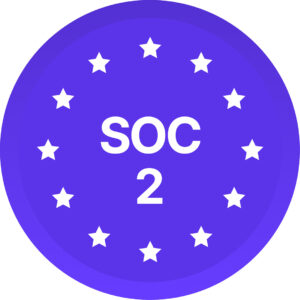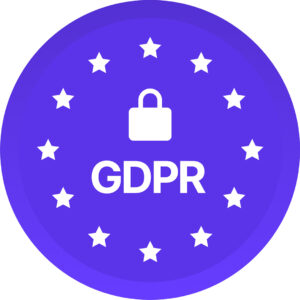According to research, up to 80% of employees are looking for a diverse, inclusive workplace. To attract the right talent, to help avoid discrimination lawsuits, to help create better workplaces, and for a host of other reasons, many workplaces today are looking to foster Diversity, Equity, and Inclusion (DEI). In many cases, it starts with an equality and diversity questionnaire for employees.
Used correctly, a diversity, equity, and inclusion questionnaire can help business owners, human resources (HR) managers, diversity managers, and other professionals gather the information they need to make important, sustainable changes at a company. Unfortunately, using a cultural diversity questionnaire incorrectly can lead to upset workers, inaccurate data, unusable information, and even liability issues.
Why Is It Important to Distribute Diversity Questionnaires?
The right questionnaire on cultural diversity in a workplace helps you take the pulse of your company. It lets you determine what your workers are seeing and thinking and it can help you identify issues and pain points. With the right questionnaire, you can find out whether any employees are quietly feeling left out and can gather information about any oversights that are preventing you from creating an inclusive space.
An equality and diversity questionnaire for employees can also gather data that can serve as a benchmark for your diversity efforts. By conducting checks regularly, you may be able to see how the changes you’re making are impacting your team and their perspectives.
What Do They Typically Ask About?
Every diversity questionnaire is different and will depend on the company’s needs, the goal of the workplace diversity questionnaire, and even when the survey is being conducted. It can be useful to look at a diversity questionnaire example or two to get a sense of the questions other companies ask when creating your own survey. Many diversity questionnaires can include questions that allow respondents to self-identify their:
- Gender
- Race
- Ethnicity
- Sexual orientation
- Disability status
- Age
- Veteran status
- Role
- Level of seniority
- Education level
Diversity questionnaires vary, but the general goal is to gather metrics about dimensions of identity. One thing that makes Diversio’s questionaries unique is that we also evaluate how team members feel about inclusion. We help organizations determine whether employees feel more can be done to create a welcoming workplace for all.
Where Can They Go Wrong?
A diversity and inclusion questionnaire alone is not enough to transform a workplace. It is rather a starting point, and the foundation of your diversity efforts going forward. Unfortunately, a questionnaire on cultural diversity at your workplace can go wrong in a few ways:
- A cultural diversity questionnaire may gather the wrong data. If you are just starting a diversity program, for example, you may need to gather demographic data or determine what needs workers see in the workplace. If you have been making efforts toward diversity, you may need to gather feedback about your program to determine what is & is not working.
- It may be designed without a clear goal in mind. A clear aim, whether that’s taking the pulse of your organization or identifying pain points, helps you better design the questions & create an action plan from the data.
- Respondents may reply with what they think they should say. Team members may not feel comfortable sharing critiques about the company. Offering an anonymous questionnaire & ensuring confidentiality by working with a third party to offer the survey can help. It can also help protect you from liability by ensuring team members don’t feel singled out for their sexual orientation, gender, race, or ethnicity. Team members can also be more comfortable if your organization can be transparent & clear about why the questionnaire is being offered & how the information will be used.
When creating a diversity needs assessment questionnaire or any diversity questionnaire, it’s important to consider the questionnaire from the employee’s point of view. Make sure the experience is positive and feels safe. Make sure the questionnaire is accessible, too.
How About the Resulting Data — How Is It Being Used?
A diversity questionnaire can be a jumping-off point, allowing your business to make important changes. To do that, however, you need to consider how the data will be used. Are you hoping to use the information to develop a diversity plan or make adjustments to your current plan? Are you hoping to use the data to increase diversity at the leadership level? Having a plan in place allows you to act as soon as you gather information.
What Are Some Challenges to Making the Best Use of Employee Questionnaires?
Once the workforce diversity questionnaire is complete and everyone’s replies have been gathered, you may be eager to make use of the information you have. Before you dive in, consider the challenges workplaces run into when they try to act on a workplace diversity questionnaire:
- Interpreting the data. If workers express a desire for diversity training, for example, how can you interpret that? What kind of training would best suit them? In some cases, you may need follow-up questions to interpret the data. Or you may need to compare a few datasets over time to get more context.
- Comparing answers. If one worker replies to a question by saying a current diversity program is “fairly” successful & another worker states the program is “very” successful, how much of a gap is there between their experiences? All surveys rely on our use of language, which is very individual, so comparing employee experiences & interpreting replies can be a challenge.
- Deciding on a course of action. A workforce diversity questionnaire is most powerful when it leads to action, but how can you create a roadmap for change at your workplace from the data you have gathered, especially if not all decision-makers agree on the best course of action? It’s common for different ideas to arise after data is gathered.
Using diversity questionnaires can pay off. Studies have shown that diverse companies outperform their less diverse competitors. In fact, companies in the top quarter when it came to gender-diverse representation among leadership were 25% more likely than lower quartile companies to have above-average profits. By keeping an eye on the potential challenges of a diversity questionnaire, you can be prepared to avoid these issues so you can reap the benefits.
How Does Diversio Solve Diversity Program Challenges?
While you can look at a diversity questionnaire example or a few examples, working with Diversio to scale your diversity efforts means working with professionals who not only create and conduct a diversity questionnaire but also provide you with an AI-powered DEI Dashboard so you can track progress, compare your efforts to other businesses in your industry, and target pain points.
The Diversio Recommendation Engine always provides you with a bespoke action plan for making changes while a combination of natural language processing and AI allows you to accurately compare and interpret responses from team members. As the first AI-powered DEI Platform in the world, Diversio is poised to help you get beyond the challenges of a typical diversity questionnaire and help you get to the diverse workplace you deserve. Request a demo today or contact us to discuss your needs.

